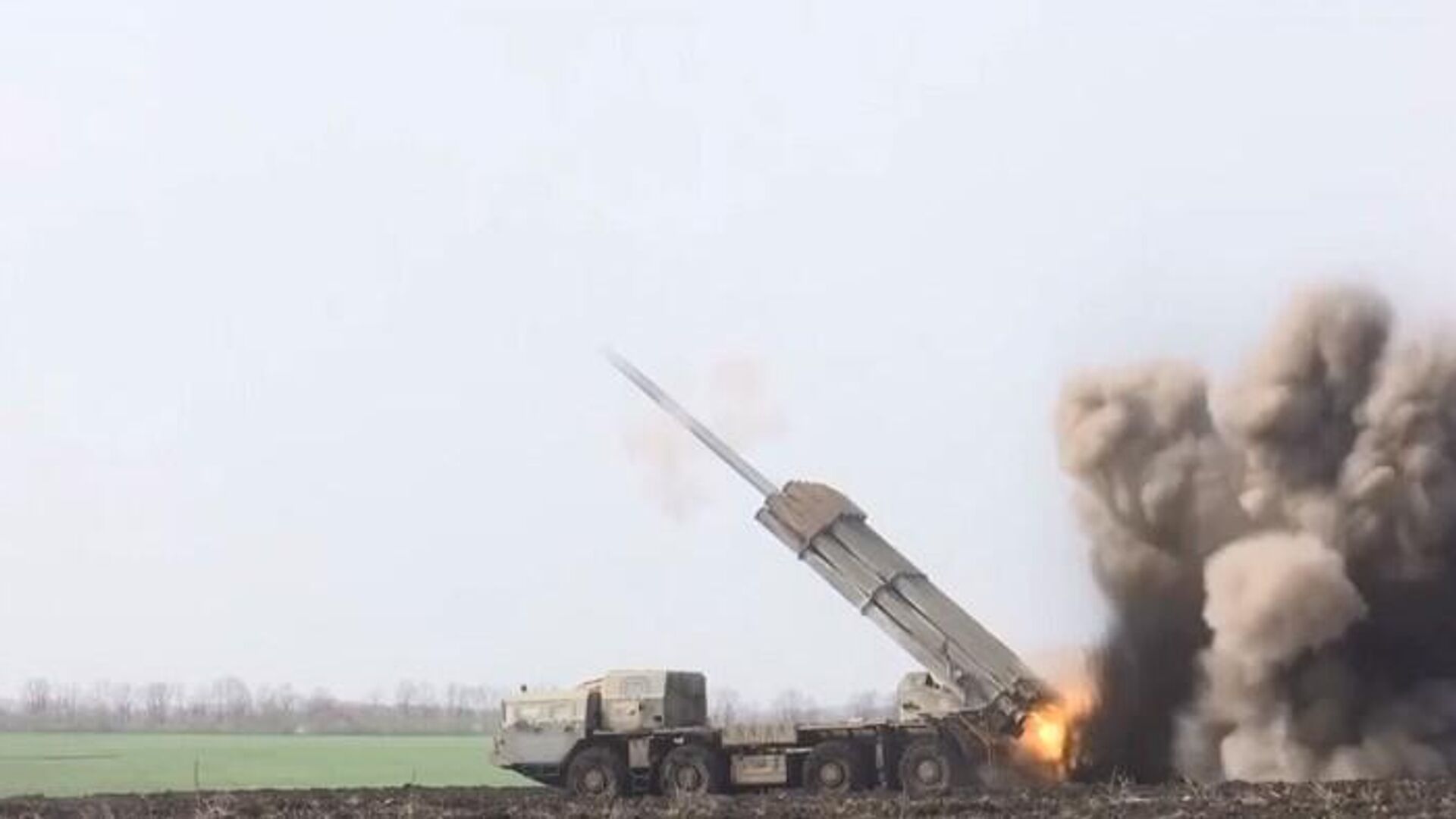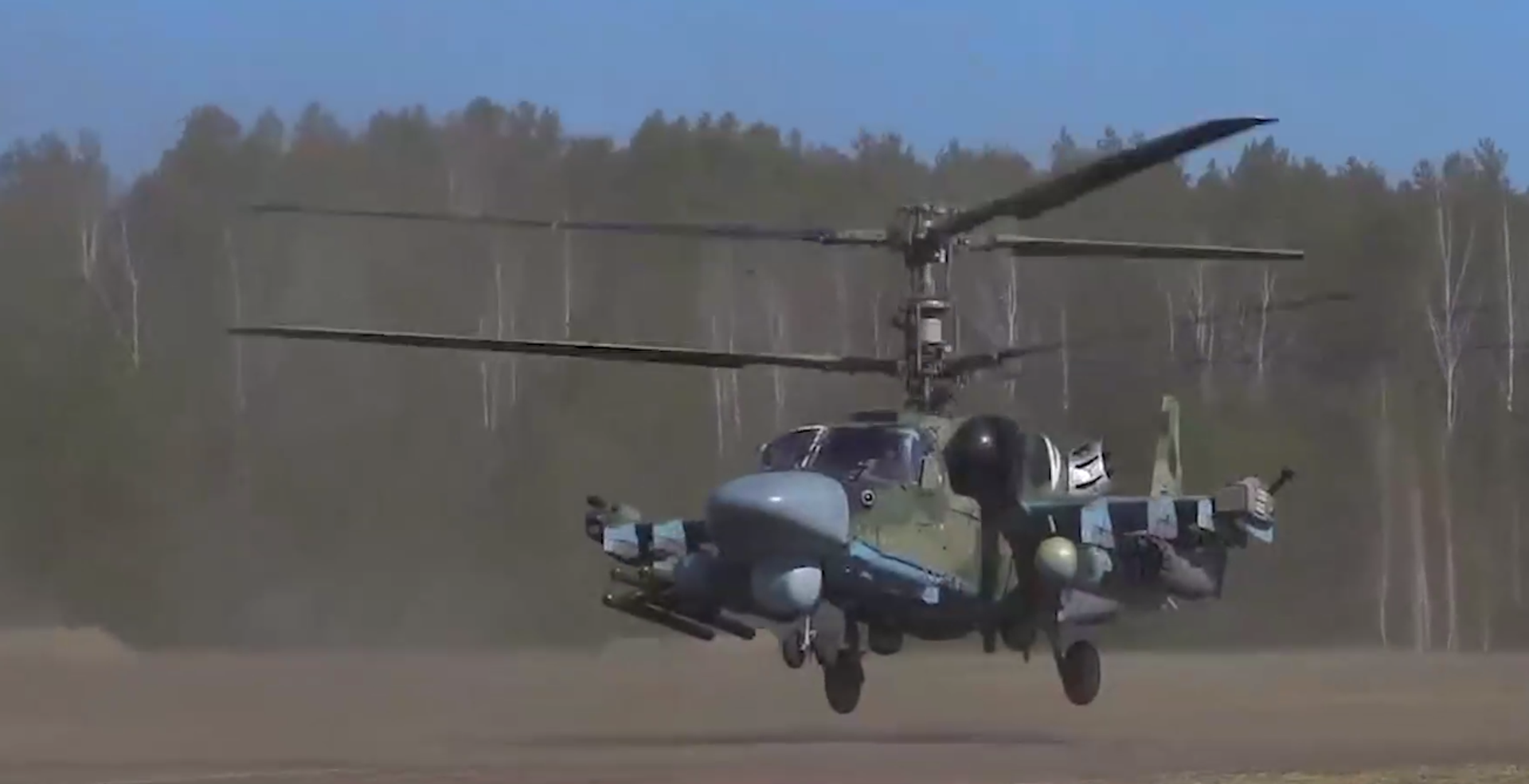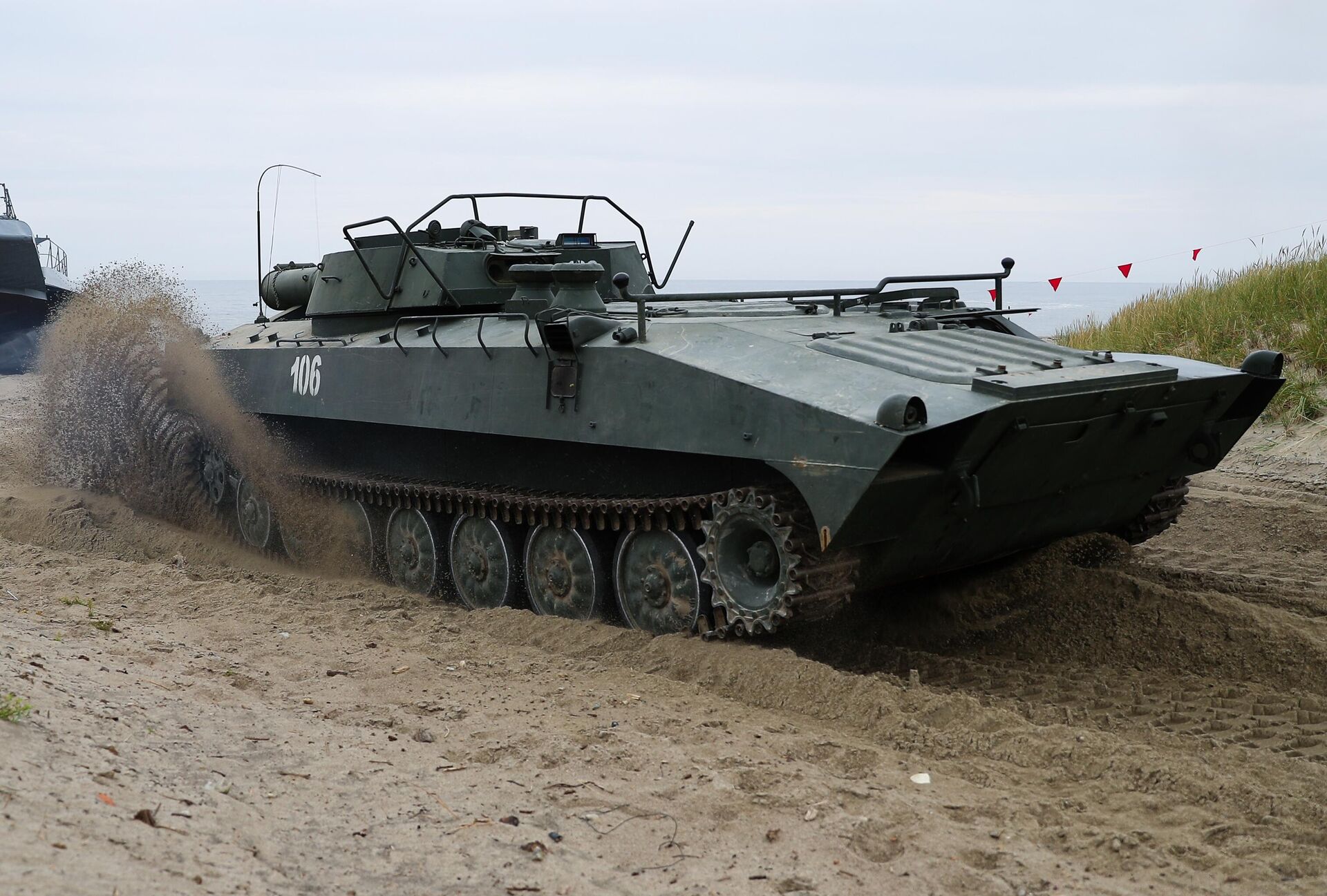https://sputnikglobe.com/20230914/powerful-russian-weapons-tear-nato-hardware-to-shreds-in-ukraine-1113377071.html
Powerful Russian Weapons Tear NATO Hardware to Shreds in Ukraine
Powerful Russian Weapons Tear NATO Hardware to Shreds in Ukraine
Sputnik International
The ongoing Ukrainian "counteroffensive," which has been dragging on for three months now, has essentially confirmed that Western military hardware is not superior to Russian weaponry.
2023-09-14T18:47+0000
2023-09-14T18:47+0000
2023-09-15T09:35+0000
military
russia
ukraine
weapons
helicopters
multiple launch rocket systems
artillery
drones
mines
https://cdn1.img.sputnikglobe.com/img/07e6/04/15/1094938083_147:0:847:394_1920x0_80_0_0_4434a424b06eaa29c4ecf5acae2af4fa.jpg
Instead of witnessing Ukrainian crack assault brigades smashing through the Russian defensive lines with the help of vast quantities of Western military hardware supplied by NATO, the regime in Kiev and its sponsors watched instead as well-entrenched Russian forces methodically obliterated everything thrown at them.So what tools does Russia use to repeatedly humble the Ukrainian war machine backed by the entire financial and military might of the United States and NATO?Air PowerWhile some Western masters of military strategy and tactics have attributed Kiev’s failings on the battlefield to the dastardly shrubbery, there were also those who pointed at factors such as Russia's distinct advantage in the air.One weapon in particular, the Ka-52 attack helicopter commonly referred to as "Alligator," has made quite a name for itself, striking at Ukrainian armor and vanishing before the enemy manages to muster a response.Even if it ends up taking flak, literally, Ka-52 can often endure the punishment and make it back to base thanks to the helicopter's impressive plating.Russian drones have also proved quite adept at dealing stinging blows to Ukrainian military assets.The Lancet-3 loitering munitions, for example, have become a veritable headache for Ukrainian officers thanks to their uncanny ability to deliver precise and crippling blows to armored vehicles, radar stations and even air defense systems.MinesWhen Ukrainian forces rushed towards the first Russian defensive line, they quickly hit a snag in the form of extensive minefields carefully prepared for their arrival by the Russian forces.This additional layer of defense, which helped turn the Ukrainian advance into a bloody slog for the Kiev regime forces, was made possible in no small part thanks to the mobile mine laying system ISDM Zemledeliye employed by the Russian troops.Essentially a set of tube launchers mounted on a military truck, Zemledeliye (which means "agriculture" in Russian) can rapidly cover a vast swath of land with mines by launching them from a distance of up to 15 kilometers, with the weapon system operating akin to a multiple launch rocket system - one that fires mines instead of rockets, that is.The type of mines Zemledeliye can launch varies from POM-3 anti-personnel fragmentation mines to PTM-4M anti-tank mines.And when Russian forces themselves need to navigate an enemy minefield, that’s when UR-77 mine clearing vehicles come into action.Based on tracked chassis, the UR-77 can launch mine-clearing charges that extend into a long line before detonating, effectively destroying any mines in an area about 90 meters long and 6 meters wide.ArtillerySince the launch of the Russian military operation in Ukraine in February 2022, the Ukrainian forces have learned the hard way exactly how efficient and deadly Russian artillery is.The destructive might of this particular branch of the Russian Armed Forces became especially evident during the Ukrainian "counteroffensive" when those Ukrainian troops who managed to make it past the minefields often get taken out by artillery fire before they can come to grips with Russian forces.The Russian forces employ a wide array of artillery pieces to achieve these results, including the Msta-B and Giatsint-B 152mm towed howitzers; Akatsiya, Giatsint-S and Msta-S 152mm self-propelled howitzers; and the Tyulpan 240mm self-propelled heavy mortar that is capable of lobbing 130 kg shells at targets up to 18 kilometers away.Despite the fact that many of these weapon systems were developed and adopted during the Soviet era, they proved to be quite effective against the supposedly superior Western military hardware.Russian troops also use multiple launch rocket systems like the 122mm BM-21 Grad and Tornado-G, the 220mm BM-27 Uragan and the 300mm BM-31 Smerch.
russia
ukraine
Sputnik International
feedback@sputniknews.com
+74956456601
MIA „Rossiya Segodnya“
2023
News
en_EN
Sputnik International
feedback@sputniknews.com
+74956456601
MIA „Rossiya Segodnya“
Sputnik International
feedback@sputniknews.com
+74956456601
MIA „Rossiya Segodnya“
best russian military weapons, russian military equipment, russian armaments in ukraine, russia artillery in ukraine, russian drones used in ukraine
best russian military weapons, russian military equipment, russian armaments in ukraine, russia artillery in ukraine, russian drones used in ukraine
Powerful Russian Weapons Tear NATO Hardware to Shreds in Ukraine
18:47 GMT 14.09.2023 (Updated: 09:35 GMT 15.09.2023) The ongoing Ukrainian "counteroffensive," which has been dragging on for three months now, has essentially confirmed that Western military hardware is not superior to Russian weaponry.
Instead of witnessing Ukrainian crack assault brigades smashing through the Russian defensive lines with the help of vast quantities of Western military hardware supplied by NATO, the regime in Kiev and its sponsors watched instead as well-entrenched Russian forces methodically obliterated everything thrown at them.
So what tools does Russia use to repeatedly humble the Ukrainian war machine backed by the entire financial and military might of the United States and NATO?
While some Western masters of military strategy and tactics have attributed Kiev’s failings on the battlefield to the dastardly
shrubbery, there were also those who pointed at factors such as Russia's distinct advantage in the air.
One weapon in particular, the
Ka-52 attack helicopter commonly referred to as "Alligator," has made quite a name for itself, striking at Ukrainian armor and vanishing before the enemy manages to muster a response.
Even if it ends up taking flak, literally, Ka-52 can often endure the punishment and make it back to base thanks to the helicopter's impressive plating.
Russian
drones have also proved quite adept at dealing stinging blows to Ukrainian military assets.
The Lancet-3 loitering munitions, for example, have become a veritable headache for Ukrainian officers thanks to their uncanny ability to deliver precise and crippling blows to armored vehicles, radar stations and even air defense systems.
When Ukrainian forces rushed towards the first Russian defensive line, they quickly hit a snag in the form of extensive
minefields carefully prepared for their arrival by the Russian forces.
This additional layer of defense, which helped turn the Ukrainian advance into a bloody slog for the Kiev regime forces, was made possible in no small part thanks to the mobile mine laying system ISDM Zemledeliye employed by the Russian troops.
Essentially a set of tube launchers mounted on a military truck, Zemledeliye (which means "agriculture" in Russian) can rapidly cover a vast swath of land with mines by launching them from a distance of up to 15 kilometers, with the weapon system operating akin to a multiple launch rocket system - one that fires mines instead of rockets, that is.
The type of mines Zemledeliye can launch varies from POM-3 anti-personnel fragmentation mines to PTM-4M anti-tank mines.
And when Russian forces themselves need to navigate an enemy minefield, that’s when UR-77 mine clearing vehicles come into action.
Based on tracked chassis, the UR-77 can launch mine-clearing charges that extend into a long line before detonating, effectively destroying any mines in an area about 90 meters long and 6 meters wide.
Since the launch of the Russian military operation in Ukraine in February 2022, the Ukrainian forces have learned the hard way exactly how efficient and deadly Russian artillery is.
The destructive might of this particular branch of the Russian Armed Forces became especially evident during the Ukrainian "counteroffensive" when those Ukrainian troops who managed to make it past the minefields often get taken out by artillery fire before they can come to grips with Russian forces.
The Russian forces employ a wide array of artillery pieces to achieve these results, including the Msta-B and Giatsint-B 152mm towed howitzers; Akatsiya, Giatsint-S and Msta-S 152mm self-propelled howitzers; and the Tyulpan 240mm self-propelled heavy mortar that is capable of lobbing 130 kg shells at targets up to 18 kilometers away.
Despite the fact that many of these weapon systems were developed and adopted during the Soviet era, they proved to be quite effective against the supposedly superior Western military hardware.
Russian troops also use multiple launch rocket systems like the 122mm BM-21 Grad and Tornado-G, the 220mm BM-27 Uragan and the 300mm BM-31 Smerch.





